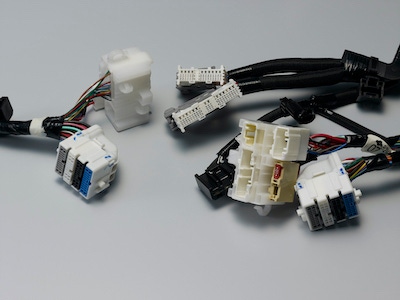PBT Grade Debuts for High-Voltage Automotive Applications
As car makers move increasingly to electric vehicles, the demand for high-voltage components is expected to increase.
March 23, 2020

The Polyplastics Group is offering an improved polybutylene terephthalate (PBT) grade which provides improved tracking resistance for a range of high-voltage automotive components. Duranex PBT CG7030 is a 30% glass-filled grade which also delivers strong dimensional stability and highly stable electrical resistance and dielectric breakdown properties.
|
PBT connectors absorb less moisture than those molded from PA 66. Image courtesy of Polyplastics. |
The automotive industry is undergoing drastic change with electrification gaining traction due to worldwide efforts to reduce the use of fossil fuels and cut emissions. As car makers move increasingly to electric vehicles (EVs), the demand for high-voltage components is expected to increase. Polyplastics conducted extensive testing of both polyamide (PA) 66 and PBT in temperature environments ranging from -40°C to 140°C for electric car applications such as batteries, power control units (PCUs), and motors/generators.
Since the properties of PBT grades experience little change even in hot, moist environments, Polyplastics determined that they are more suitable than PA66 for use in high-voltage applications. These results suggest that using PBT could produce less variation in electrical properties when environments change.
Duranex PBT CG7030 exhibits highly superior dimensional stability. Polyplastics reports that both moisture absorption and dimensional change rates for PBT grades are around one-tenth of the values observed for PA66-GF33%.
Test results also show that Duranex PBT CG7030 maintains its dielectric breakdown strength in high heat and humid environments (85ºC/85%RH, after 1,000 hours). Indeed, a significant decline of around 40% was observed for PA66-GF33% in high heat and high moisture conditions.
Duranex PBT CG7030 also has improved volume resistivity versus PA66-GF33% which shows significant declines in high heat and high moisture environments.
About the Author(s)
You May Also Like




